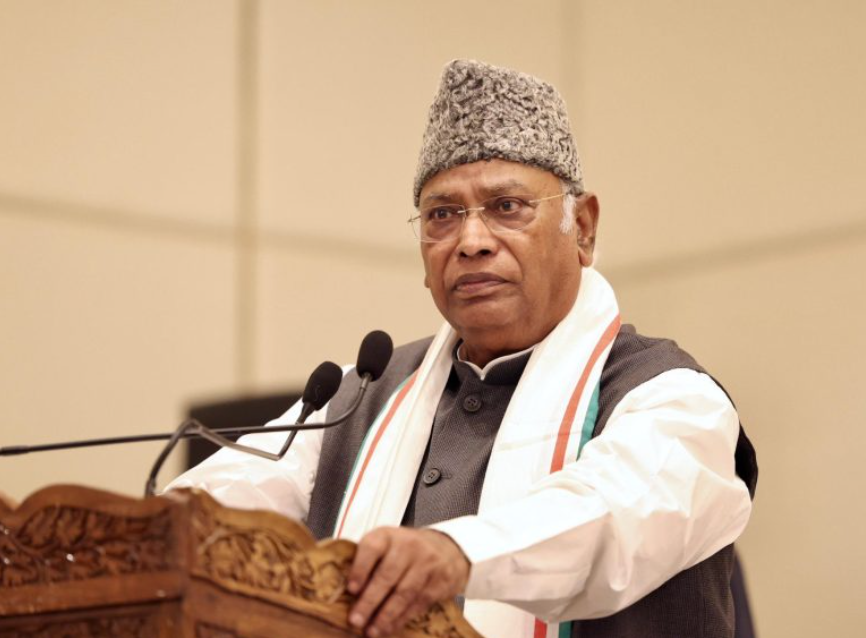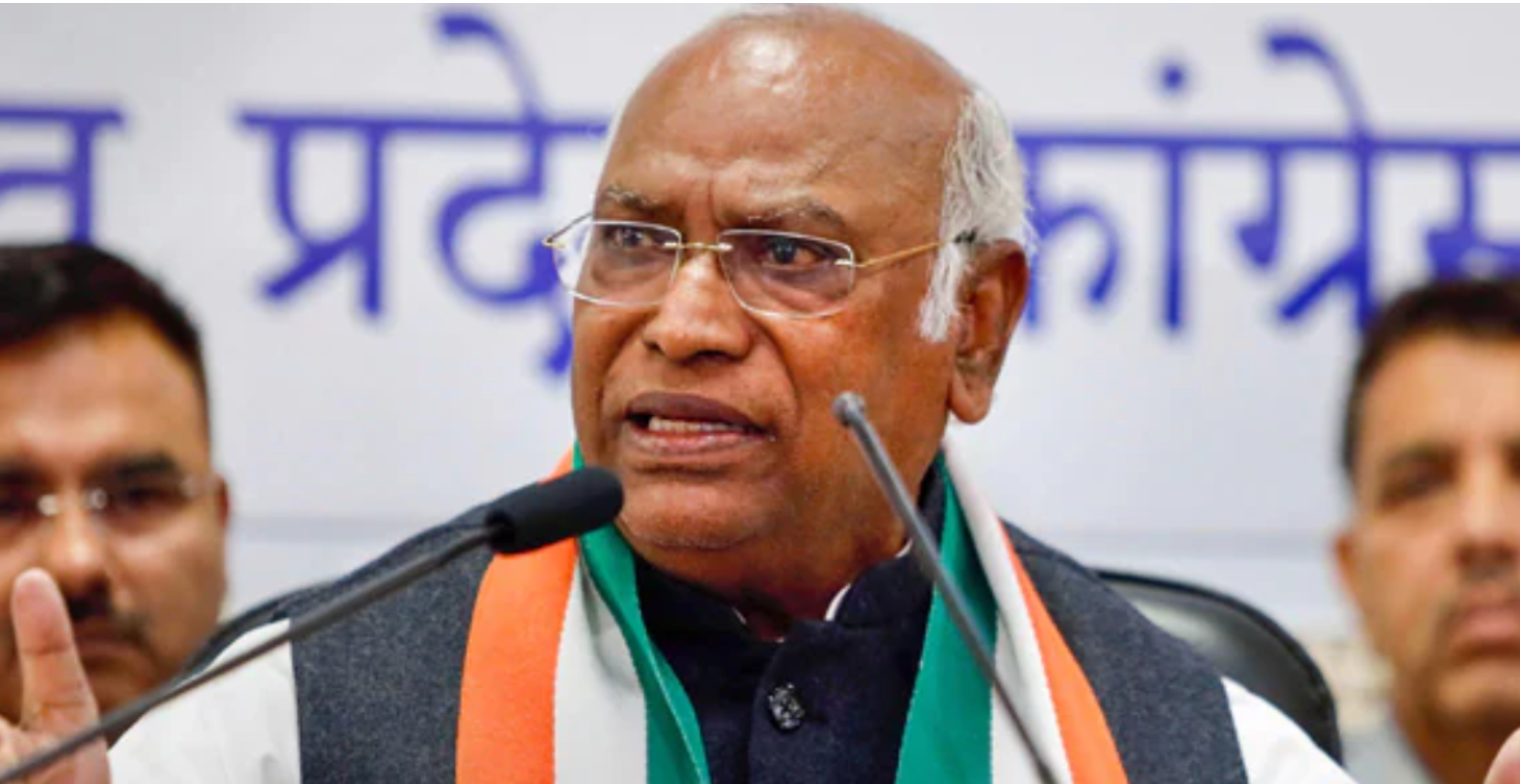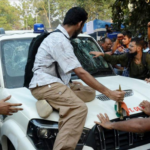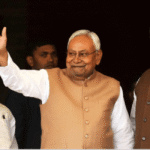Present State of MNREGA:-
Present State of MNREGA Mahatma Gandhi National Rural Employment Guarantee Act (MNREGA), launched in 2005, has long been hailed as a lifeline for millions of rural households across India. Designed to provide at least 100 days of wage employment per year to rural households, MNREGA has been a cornerstone of rural development, poverty alleviation, and social security. However, in recent years, the scheme has been the subject of intense scrutiny and criticism, particularly from the opposition. Congress President Mallikarjun Kharge has been vocal in his condemnation of the current state of MNREGA, Present State of MNREGA calling it a “living monument” of Prime Minister Narendra Modi’s betrayal of rural India. This article explores the evolution of MNREGA under the Modi government, the challenges faced by the scheme, and the political discourse surrounding it.
The Origins and Impact of MNREGA
MNREGA was introduced by the United Progressive Alliance (UPA) government under the leadership of then-Prime Minister Dr. Manmohan Singh, with the vision of providing rural employment and reducing poverty. The scheme guarantees at least 100 days of wage employment in a financial year to every household whose adult members volunteer to do unskilled manual work. The program was lauded for its potential to empower rural workers, particularly women and marginalized communities, Present State of MNREGA by providing them with a steady income and improving their living standards.
Over the years, MNREGA has had a significant impact on rural India. It has played a crucial role in reducing rural poverty, creating durable assets, and empowering women by giving them opportunities for financial independence. The scheme has also been instrumental in stemming the migration of rural populations to urban areas in search of work, thereby stabilizing rural economies.
MNREGA Under the Modi Government: A Shift in Focus
When Narendra Modi became Prime Minister in 2014, there was widespread speculation about the future of MNREGA. The Modi government initially appeared skeptical of the scheme, with the Prime Minister himself referring to MNREGA as a “living monument of the Congress party’s failure” to alleviate poverty. Despite this, the government continued to implement the scheme, albeit with significant changes in its administration and funding.  for more information click on this link
for more information click on this link
One of the most significant changes under the Modi government has been the shift in focus from employment generation to asset creation. The government has emphasized the creation of durable assets through MNREGA projects, such as roads, ponds, and irrigation facilities. While asset creation is an important aspect of the scheme, Present State of MNREGA critics argue that this shift has diluted the original purpose of MNREGA, which was to provide immediate wage employment to rural workers.
Challenges Facing MNREGA: Fund Cuts, Delays, and Administrative Hurdles
Under the Modi government, MNREGA has faced several challenges that have hindered its effectiveness. Among the most significant issues are fund cuts, delayed payments, and administrative hurdles, Present State of MNREGA all of which have led to a decline in the scheme’s ability to fulfill its mandate.
- Fund Allocation and Cuts: One of the primary criticisms leveled against the Modi government is the inadequate allocation of funds for MNREGA. Over the years, there have been several instances where the allocated budget has fallen short of the demand for work under the scheme. For example, in the 2023-24 Union Budget, the allocation for MNREGA was reduced by nearly 33% compared to the previous year, Present State of MNREGA despite the fact that the demand for work under the scheme had increased due to the economic impact of the COVID-19 pandemic. The reduction in funds has resulted in a backlog of unpaid wages and a lack of resources to undertake new projects.
- Delayed Payments: Another major issue plaguing MNREGA is the delay in wage payments to workers. According to the law, workers are supposed to be paid within 15 days of completing their work. However, there have been widespread reports of delays, with some workers waiting for months to receive their wages. Delayed payments undermine the very purpose of the scheme, as it deprives rural workers of timely income, exacerbating their financial hardships.
- Administrative Bottlenecks: MNREGA has also been affected by administrative bottlenecks at the state and district levels. These include issues related to the timely release of funds from the central government to the states, Present State of MNREGA delays in the approval of work projects, and inefficiencies in the implementation of the scheme. The lack of adequate staffing and resources at the grassroots level has further compounded these problems, leading to a decline in the quality and reach of MNREGA.
- Introduction of Digital Payments and Aadhaar Linkage: The Modi government introduced digital payments and Aadhaar linkage to streamline the MNREGA payment process and reduce corruption. While these measures were well-intentioned, they have created new challenges for workers, particularly those in remote areas with limited access to banking facilities or those who face issues with Aadhaar authentication. Many workers have faced difficulties in accessing their wages due to errors in Aadhaar seeding, lack of banking infrastructure, and technical glitches in the payment system.
- Shrinking Workdays: Despite the guarantee of 100 days of work, many households have reported receiving far fewer workdays under MNREGA. This reduction in workdays can be attributed to several factors, including insufficient funding, Present State of MNREGA delayed project approvals, and a focus on asset creation rather than employment generation. The shrinking number of workdays has left many rural households struggling to make ends meet, particularly in times of economic distress.
Mallikarjun Kharge’s Criticism: A Betrayal of Rural India
Mallikarjun Kharge, a prominent leader of the Congress party and the current President of the Indian National Congress, has been a vocal critic of the Modi government’s handling of MNREGA. Kharge argues that the current state of the scheme is a testament to the government’s betrayal of rural India, Present State of MNREGA which has been disproportionately affected by the government’s policies.
In his speeches and public statements, Kharge has accused the Modi government of deliberately undermining MNREGA by cutting funds, Present State of MNREGA delaying payments, and introducing policies that have made it difficult for rural workers to access the scheme. He contends that the government’s focus on asset creation at the expense of wage employment has eroded the core principles of MNREGA, leaving millions of rural households without the support they need to survive.
Kharge has also criticized the government’s handling of the COVID-19 pandemic, arguing that the reduction in MNREGA funding during a time of economic crisis has exacerbated the plight of rural workers. He points out that MNREGA was a lifeline for many rural households during the pandemic, Present State of MNREGA providing them with a source of income when other employment opportunities were scarce. The government’s decision to cut funding for the scheme, he argues, is a clear indication of its disregard for the welfare of rural India.
The Political Discourse Surrounding MNREGA
The debate over MNREGA has become a central issue in the political discourse in India, with both the ruling party and the opposition using it as a platform to advance their respective agendas. For the Congress party, MNREGA is a symbol of its commitment to social justice and rural development, Present State of MNREGA and the party has consistently highlighted the scheme’s successes during its tenure in government. Kharge’s criticism of the Modi government’s handling of MNREGA is part of a broader strategy to position the Congress party as the defender of rural India, a constituency that has been a key voter base for the party.
On the other hand, the Bharatiya Janata Party (BJP) has sought to portray MNREGA as a flawed and inefficient scheme that has been mismanaged by previous governments. The Modi government’s focus on asset creation and digital payments is framed as an attempt to modernize the scheme and reduce corruption. However, the government’s critics argue that these measures have done little to address the core issues facing MNREGA and have instead created new challenges for rural workers.
The political discourse surrounding MNREGA is also reflective of the broader ideological differences between the Congress party and the BJP. While the Congress party advocates for a welfare-oriented approach to governance, Present State of MNREGA the BJP has emphasized the need for economic reforms and fiscal discipline. These differing perspectives are evident in the way the two parties have approached MNREGA, with the Congress party focusing on employment generation and the BJP prioritizing asset creation and efficiency.  for more information click on this link
for more information click on this link
The Way Forward: Strengthening MNREGA for Rural India
As the debate over MNREGA continues, it is clear that the scheme remains a vital component of India’s rural development strategy. However, to ensure that MNREGA continues to fulfill its mandate, several key reforms and policy changes need to be considered:
- Adequate Fund Allocation: The government must ensure that MNREGA is adequately funded to meet the demand for work. This includes increasing the budget allocation for the scheme and ensuring the timely release of funds to the states. Adequate funding is essential to provide workers with the guaranteed 100 days of employment and to prevent delays in wage payments.
- Timely Wage Payments: Ensuring timely wage payments is crucial to the success of MNREGA. The government should streamline the payment process, address technical issues related to digital payments and Aadhaar linkage, Present State of MNREGAand strengthen the grievance redressal mechanism to resolve payment delays quickly. Workers should not have to wait for months to receive their wages, as this undermines their financial stability.
- Focus on Employment Generation: While asset creation is important, the primary focus of MNREGA should remain on employment generation. The government should prioritize projects that provide immediate work opportunities to rural households, particularly during times of economic distress. This may include reviving traditional labor-intensive activities such as afforestation, Present State of MNREGA water conservation, and rural infrastructure development.
- Strengthening Local Governance: The success of MNREGA depends on effective implementation at the grassroots level. Strengthening local governance institutions, such as Panchayati Raj Institutions (PRIs), and providing them with the necessary resources and training can improve the administration of the scheme. Local bodies should be empowered to identify and implement projects that meet the specific needs of their communities.
- Monitoring and Accountability: Ensuring transparency and accountability in the implementation of MNREGA is essential to prevent corruption and inefficiencies. The government should enhance the monitoring mechanisms for the scheme, including regular social audits, and take strict action against those found guilty of misusing funds or violating the rights of workers.
- Expanding the Scope of MNREGA: In light of the changing socio-economic landscape, the government should consider expanding the scope of MNREGA to include new areas of work, such as skill development, Present State of MNREGA rural tourism, and environmental conservation. This would not only provide workers with more diverse employment opportunities but also contribute to the overall development of rural areas.
Conclusion
Mallikarjun Kharge’s assertion that the present state of MNREGA is a “living monument” of Modi’s betrayal of rural India reflects the deep political and ideological divides surrounding the scheme. While MNREGA remains a vital lifeline for millions of rural households, its effectiveness has been hampered by funding cuts, administrative challenges, and a shift in focus away from employment generation. As the debate over MNREGA continues, Present State of MNREGA it is crucial for the government to address these issues and strengthen the scheme to ensure that it continues to serve as a pillar of rural development and social security in India. By doing so, MNREGA can fulfill its original promise of providing meaningful employment and improving the lives of rural workers across the country. ALSO READ:- Bangladesh Revokes Sheikh Hasina’s Diplomatic Passport: A Controversial Move Amidst Political Transition 2024





